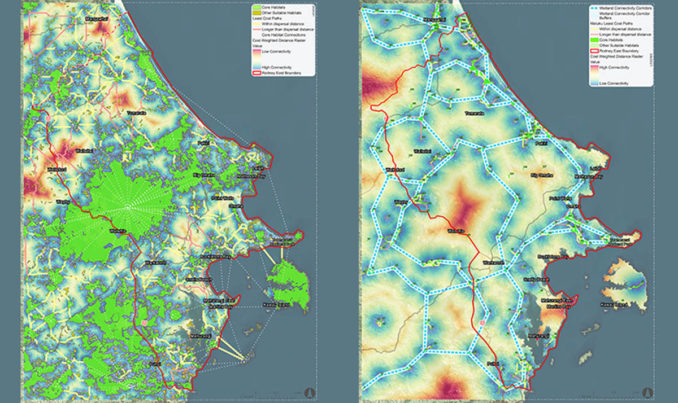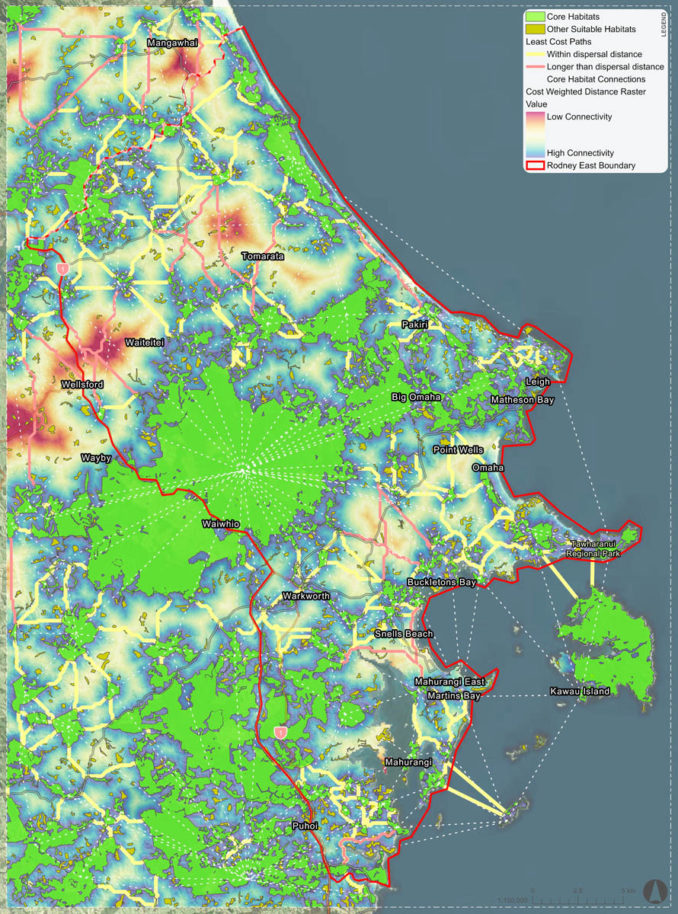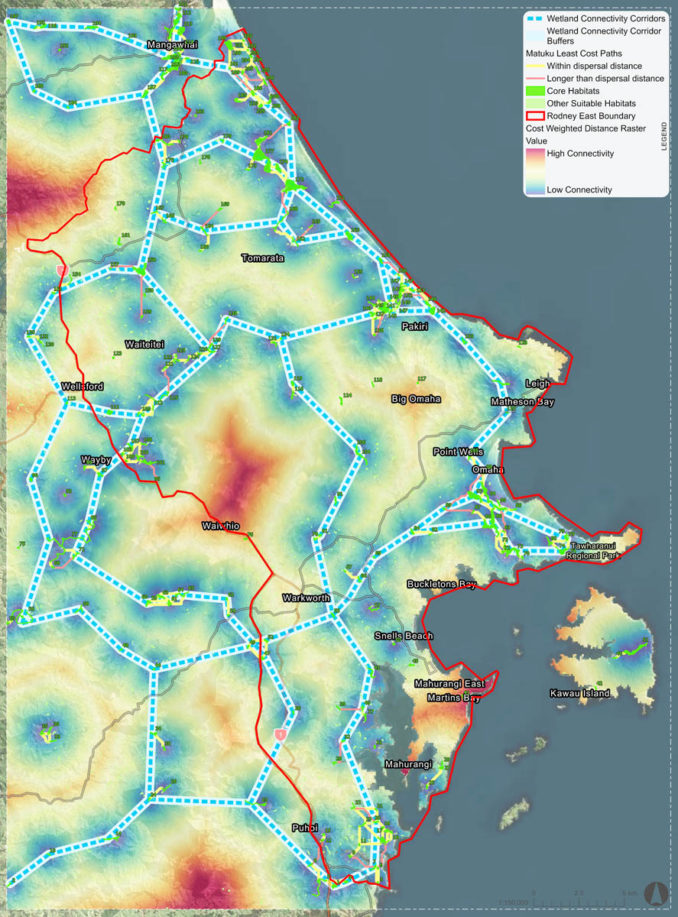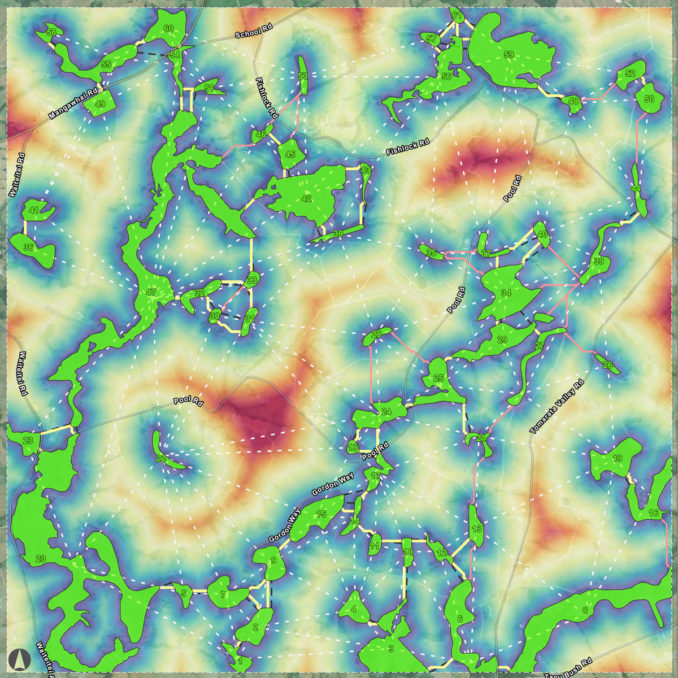An innovative tool to help conservation groups and organisations strategically plan and prioritise conservation actions.

Boffa Miskell has developed Ecological Connectivity Strategies (ECS) for two local council boards in the Auckland region. Improving ecological connectivity increases ecosystem function and resilience; it helps protect biodiversity and mitigate impacts from climate change and other pressures on our ecosystems.
These Strategies were developed as a tool to help better coordinate and support limited resources. The four key objectives were:
- Map and describe areas of high ecological value and determine ecological connectivity for selected species;
- Identify gaps and evaluate opportunities to protect, enhance, connect, and extend existing habitat patches and connections;
- Prioritise areas for management, with potential management techniques; and
- Ultimately, enable mana whenua, communities, council, and other conservation agencies to work together to achieve positive biodiversity outcomes.
To inform each ECS, connectivity analyses were undertaken for a range of ‘umbrella’ species, including kererū, matuku (Australasian bittern), piwakawaka (New Zealand fantail) and mohu pererū (banded rail).
The umbrella species concept is based on the idea that conservation actions undertaken for the selected species will have substantial benefits for both the ecosystems they inhabit and other native species in those habitats.
The Strategies employed several cutting-edge methods to increase their effectiveness. Linkage Mapper software (an ArcGIS toolbox for generating wildlife corridors) was used for modelling the connectivity of the selected species between the core habitats; providing insight into the dispersal patterns of the species.
Each Strategy was presented as an online, ArcGIS StoryMap (alongside a traditional written report) to facilitate widespread engagement in conservation activities and allow users to explore connectivity and potential conservation actions in their own area of interest.
These Strategies can be used by community conservation groups to strategically plan and/or expand their conservation activities by identifying priority areas and specific actions within those priority areas. They can help groups to gain the support of additional volunteers and communicate the importance of particular conservation activities.
These maps can also be used to support and inform funding applications, by demonstrating the impact of the proposed conservation work and its bigger-picture biodiversity benefits, with objectives that incorporate a landscape-scale approach.



To the best of our knowledge, this is the first time a project like this has been undertaken in New Zealand to spatially map the connectivity patterns of selected species visually; identifying the core habitats, linkages between the habitats, and determining the corridors of high and low connectivity.
Importantly, the interactive StoryMap platform helps to engage a wider audience that may not necessarily interact with conservation strategies normally, and thus increases the environmental literacy of the wider community.
See the Upper Harbour Ecological Connectivity Strategy (Online StoryMap)
See the Rodney East Ecological Connectivity Roadmap (Online StoryMap)
Ecological Connectivity Strategies
Ecological Assessment and Strategy: Boffa Miskell
GIS Analysis: Boffa Miskell
Image Credits: Boffa Miskell
